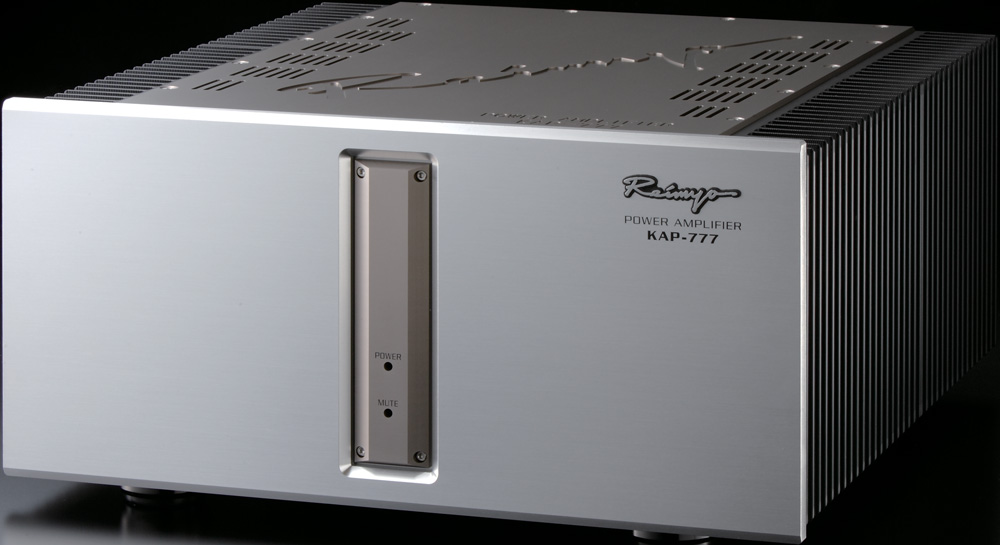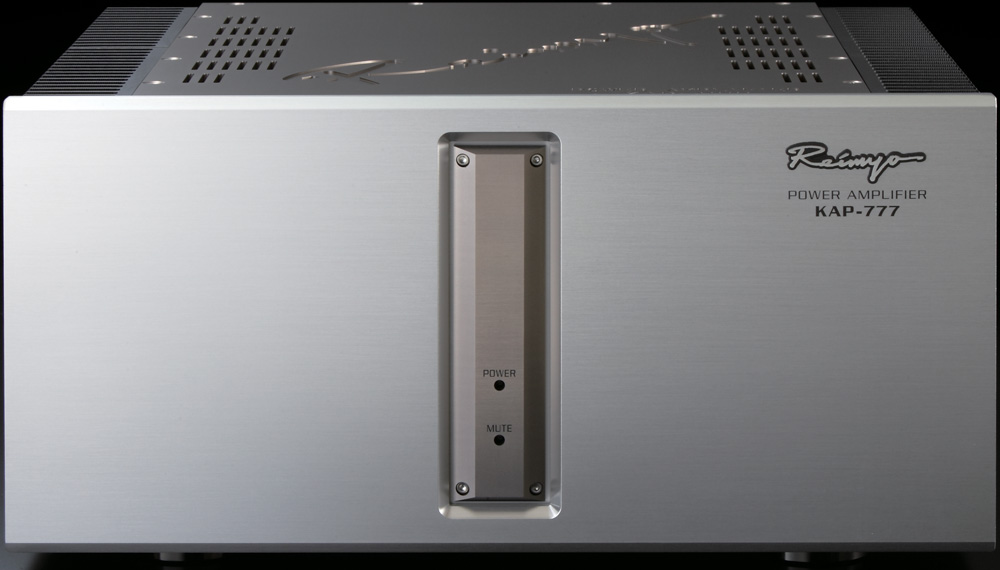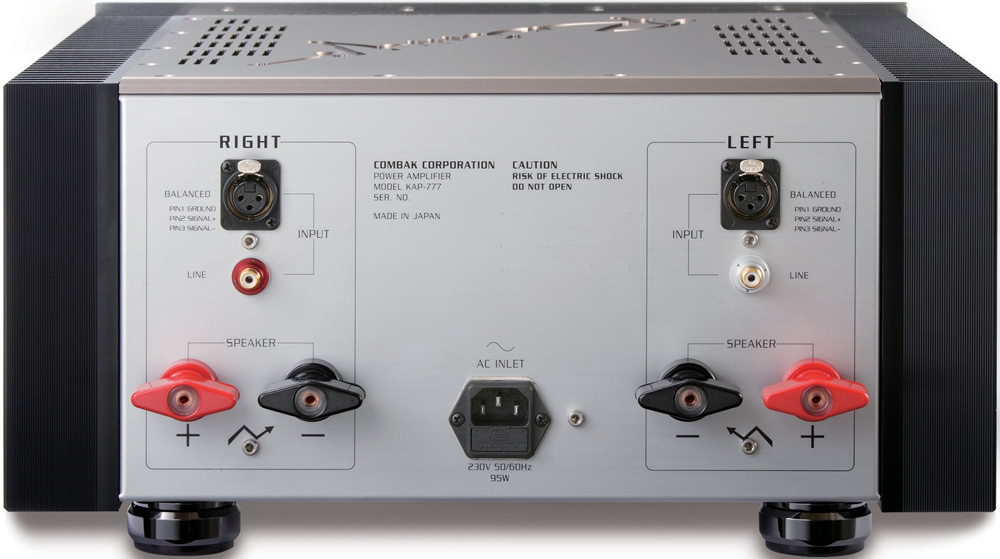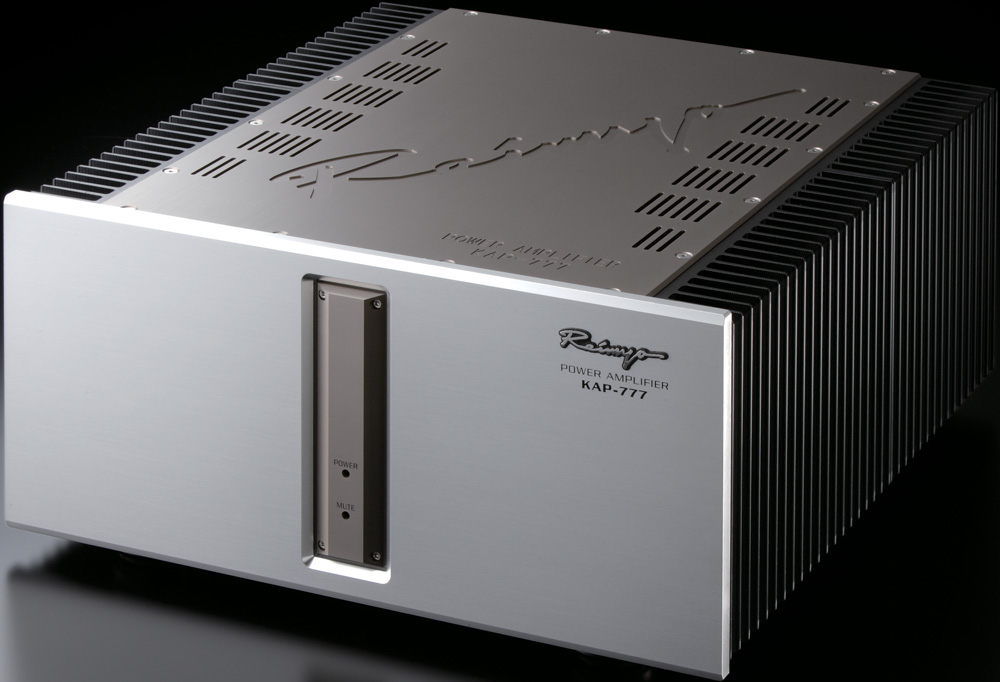Earlier this year I was approached by the North American distributor of Harmonix, Wynn Wong of Wynn Audio, to review the Reimyo KAP-777 Stereo Power amplifier and CAT-777 Mk-II Vacuum Tube Control Amplifier. Reimyo is the name given the audiophile stereo electronics line created by the Japanese firm Combak of Harmonix fame. That fact alone made this a no-brainer for me! At that point in time, I really had neither personal experience nor listening experience with Reimyo. However, just knowing its lineage, I knew that they were going to be a very interesting pairing of electronics to get to know. That said, I heartily agreed to the review invitation.
Getting Started
In this first installment, I will be focusing on the Reimyo KAP-777 stereo power amplifier, a product designed and manufactured under a cooperative program called “High Tech Fusion”. Essentially, this program combines the in-house knowledge of resonance conditioning technologies employed in Harmonix products, with recording studio technologies. Indeed, this power amplifier’s exterior exudes strength, quality, and extreme attention to detail. Heat sinks are machined from solid aluminum block, Harmonix tuning feet are integrated as footers for the chassis, the speaker connections, RCA jacks and XLR connectors are also bespoke designs for Reimyo. Under the cover, the Reimyo KAP-777 is equally impressive with custom-made componentry throughout as well as large toroidal transformers. A dual mono design, the KAP-777 produces a prodigious 200 watts continuous per channel into 8 ohms and 400 watts continuous per channel into 4 ohms from but a single MOSFET in the amplification stage.
The Reimyo KAP-777’s prodigious footprint required some modification to the space that was already occupied by the not-so-svelte mighty Pass Labs x350.5. Flanked on either side by the humungous Melody AN-845’s, the Reimyo nonetheless looked at home in that company. Indeed, I was excited at the prospect of comparing the solid state, 200-watt KAP-777 to the 150-watt Melody Audio “ big glass”AN-845. I had been advised that this particular Reimyo KAP-777 sample had already seen quite a bit of action, so I assumed that they were pretty well broken in. With the power switch hidden and out of the way underneath the front center of the chassis, I knew that these babies were meant to be left on at all times. Something I would do with any solid state device, anyway. Combak’s Reimyo electronics are highly tuned devices thanks to their Hamonix-based lineage. It therefore came as no great surprise that the power amplifier was supplied with a power cord that is specific to this amplifier, a Harmonix X-DC15SM-350. I began my listening sessions using this cord since it seemed specifically tuned to the amplifier. There were no further thoughts on tuning or configuration at this point. I simply placed the Reimyo on my spare VTI amplifier stand, swapped the amplifier in to my existing system, and replacing my Melody MN845 vacuum tube monoblocks. The rest of the system consisted of:
Merrill-Williams REAL 101.2 / Technics EPA-501M / ZYX Yatra record playback system
Zesto Audio Andros PS1 Phono Amp
Conrad Johnson UDP1 deluxe universal player
Pass Labs XP20 Line Stage
Eficion F300 full range AMT speakers
Enklein Aeros interconnects on the analog source through to power amplifier
Enklein T-Rex power cords on the mono blocks and the line stage
Enklein Taurus interconnect for digital source
Enklein Titan speaker cables
Listening Sessions
My first session with the Reimyo came at a time when I was already mid-audition on a newly updated amplifier I had reviewed and rated highly in the past. I cannot actually say which amp it was, since it was not “production”, but having it on hand at this point in time really laid the groundwork as to where in my mind the Reimyo KAP-777 figured in sonically. During the first several listening sessions, I played a wide variety of music, mainly LP’s, that are very well known to me sonically. If you follow my writings here on Dagogo, that usually means I played a mix of LP’s from 70’s to current that are well-recorded, and as such do an excellent job at exposing the strengths and short-comings of any component; besides, this is music I personally like to listen to, perhaps to the dismay of some really anal-retentive audiophiles. You know who you are!
To that end, I found the Reimyo to possess many of the seductive qualities I look for in an amplifier. The soundfield was clean, transparent, and devoid of any obvious artifacts or noise. The amplifier exhibited a relative freedom from dynamic compression and, in fact, sounded markedly “faster” and more “alive” than my reference solid-state amplifier, Pass Labs X350.5.
On live recordings such as one of my more recent go-to recordings, Tokyo Day Trip Live by Pat Metheny with Christian McBribe on upright bass, and Antonio Sanchez on percussion, the Reimyo KAP- 777 proved to be agile, of wide bandwidth, and transparent. The superbly recorded cymbals simply sounded spot on. McBride’s upright bass was right-sized and believable, if not quite as forceful and fast as I have become used to with the big Melody AN845 mono’s. In fact, I just couldn’t help but tinker with the set-up once I heard a head-to-head comparison between the Reimyo and the Melody. In an effort to rule out any chance that power cords would account for the difference in bass, I swapped out the bespoke Harmonix power cord and replaced it with the superb Enklein T-Rex cord. This change proved to be very interesting, indeed.
The addition of the T-Rex to the mix seemed to remove a layer of haze that was kind of nagging me in the prior comparison with the Melody AN-845. Differences between the two amplifiers in terms of transparency, in fact, had narrowed quite a bit. This transparency also seemed to have been enhanced by a reduction in noise floor. This later became particularly apparent when playing the superbly recorded and recently reissued LP, Live at Massey Hall by Neil Young. In this recording, the Reimyo KAP-777-Enklein T-Rex pairing yielded, simply put, a more believable and engaging listening experience. Even as I go through my notes and write this essay, I realize that these differences might be considered a “nit” to many. However, indeed to me, the differences were striking enough to mention and to proceed with the Enklein T-Rex power cord in place for the remainder of the time I had with the unit.
With the system now set in stone, I thoroughly enjoyed the entirety of that particular Neil Young album and marveled at the fact that this amplifier was accomplishing what it was doing with but a single MOSFET per channel! Neil’s voice and acoustic guitar are beautifully rendered, enabling the Eficion F300 to perform their magical disappearing act. In fact, I dare say that I’m not sure if I had heard a more believable reproduction of this album.
Another moment during the listening sessions that enabled me to clearly understand the signature and midrange poise of the Reimyo KAP-777 was the way it handled the self-titled debut album by The Roches. Yes, this is one of the albums I was alluding to earlier, an album recorded and produced by Robert Fripp in “audio verité” ( read: stark naked acoustic). When these three sisters harmonize over a single closely miked acoustic guitar, they wreak havoc on speakers, amplifiers, as well as phono playback systems. The Reimyo held its own and rendered the three sisters’ individual voices beautifully.
In fact, the only instance where there may have been some minor sign of strain in powering my Eficion F300 was in some really dynamic electronic recordings such as Daft Punk, or the tympani strikes on Peter Gabriel’s “Rhythm of the Heat” from the live-in-the-studio LP New Blood. I also may have been playing the system a bit louder than most would like. This 200-watt per channel power amplifier was definitely making a statement and setting a high mark for a solid-state, single chassis power amplifier.
The above impressions held true throughout the rest of the time this system remained together. The Reimyo KAP-777 performed extremely well regardless of the source. In recordings where it was present, the KAP-777 created a clean, transparent and right-sized soundfield without sacrificing sizing of individual images. More importantly, I didn’t miss my Melody AN845 when paired with the Pass Labs XP20 linestage. This observation was an interesting by-product of the component matching effort I engaged in during the review process. The Reimyo KAP-777 clearly favored the Pass Labs XP20 linestage over the Melody P2688 linestage. In the case of the Melody AN845 monoblocks, the opposite was clearly true. This is just another clear indication of the importance of careful component matching and cable selection.
At this point, I should mention that along with the Reimyo KAP-777, I received the companion vacuum tube-based Reimyo CAT-777 mk-II linestage, also in for review. The original intention was to review the pair together. However, the experiences I encountered with each individually were such that a simple pairing for purposes of review would have done each of them a disservice.
Summarizing
Let me just state that the Combak by Harmonix Reimyo KAP-777 is one of the most capable and musical power amplifiers I have had the pleasure of auditioning in my system. That said, of the trio of amplifiers I had on hand, the clear winner in terms of bang for the buck were the $15,000 Melody Valve MN-845 monoblocks. Of course, tubes and their prodigious heat and re-tubing costs are not for everyone. So, too, is the prodigious amount of heat that is generated by the quad of 845 tubes per channel. The Reimyo, by contrast runs ice cold, and I left it on continuously during the time it was here. The fact that it has but a single gain stage per channel may have something to do with its level of performance. Of course, this level of marvelous sonics and sophistication come at a price. With an MSRP of $28,000, this single chassis, single-MOSFET-per-channel amplifier is not exactly affordable to many. Putting it in those terms, it is easy to see why perhaps it handily out-performed the $11,500 Pass X350.5. It was not exactly an even comparison in terms of value. Perhaps a more even comparison would have been with a Pass ‘XA’ or a new “.8” series power amplifier.
Regardless, let me reiterate that the Reimyo KAP-777 is a superb amplifier and is indeed one of the best sounding solid-state amplifiers I have run across. Clearly, it is well made and much time and effort have been expended on its design. On its sonic merits I highly recommend this amplifier as a must audition. The value proposition may be just fine for some.
- (Page 1 of 1)




